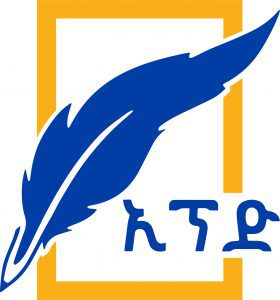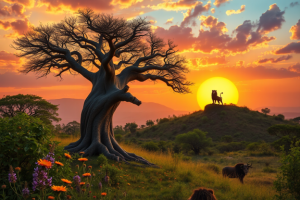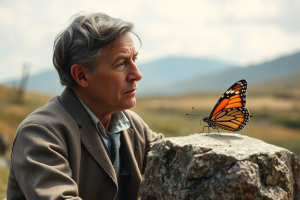Traditional activities are integral to communities’ social, cultural, and economic fabric, reflecting their identities, creative expressions, and values. In Ethiopia, various nations, nationalities, and peoples possess unique traditional systems that showcase their identities and socio-economic practices. These systems have historically shaped their lives through collective efforts in parenting, community management, conflict resolution, and the maintenance of friendships.
Several traditional systems exist in the Wolaita nation, particularly those promoting wealth. Among these, the traditional wealth-promoting practices known as “Daala, Liqa, and Gimuwaa” (Daala, liiqaanne gimuwaa) stand out as significant cultural rituals.
The Daalaa ceremony is a significant event for farmers in Wolaita, marking the moment when an individual has successfully raised his livestock to one hundred. Cattle breeding is a critical aspect of wealth in Wolaita culture, making this ceremony a vital way to declare one’s prosperity.
During the Daalaa ceremony, the owner’s cattle are counted, and a selected bull is tied as part of the ritual. The ceremony’s preparations include announcing the date to relatives, friends, and the community, typically held on a Saturday, deemed auspicious. A week ahead of time, neighbors gather to prepare the counting area, which is marked by a circle of clean wood. A central pole is placed, symbolizing stability and community support.
On the day of the ceremony, traditional foods and drinks such as muchchuwaa, pooshamuwaa, logogomuwaa, and bordiyaa are served. The evening before, the cattle counter and the ceremonial leaders spend the night feasting and celebrating, reinforcing community ties.
As the ceremony begins, the wealthy farmer and his wife participate in the ritual by drinking fresh milk together, symbolizing unity and shared prosperity. The cattle are counted by the Gabarachchaw, an experienced counter who must have completed the ritual himself to ensure the count’s validity. The counting process involves tapping the cattle gently with a bamboo stick, ensuring accuracy while blessing the animals to ward off misfortune.
Following the counting, the owner performs the hulluqaa ritual, which involves digging deep holes and offering spiritual sacrifices, including bread, milk, and the blood of a slaughtered bull and sheep. This act symbolizes gratitude and the desire for continued prosperity.
“Liiqa,” meaning “to go further,” signifies an elaborate ceremony for individuals who have raised one thousand or more cattle. This event involves a grand feast, similar to Daalaa, but on a larger scale, reflecting the owner’s increased wealth and status. Preparations for Liiqa mirror those of Daalaa, with a focus on creating a secure counting area. The ceremony begins with the slaughter of a bull and a sheep, mixing their blood a ritual believed to protect the cattle from disease. The mollanaa, or designated counter, performs the counting with strict adherence to traditions, ensuring that only those who have completed the requisite rituals can participate.
After the counting, the owner dons traditional attire, including a sereh hadiya and adornments made from animal skins. Riding a decorated horse, together they parade to the market, accompanied by traditional music and festive celebrations, showcasing their wealth and status to the community.
The Gimuwaa ceremony is typically performed by the wife of an individual who has completed the Liiqa and Daalaa rituals, or by a woman who has independently raised a significant number of cattle. This ritual is reserved for women past childbearing age, symbolizing their wisdom and respect within the community.
Accompanied by attendants, the woman enters the market adorned with traditional jewelry, such as the Gimo birataa bracelet. She is celebrated as “onakka gimaasu,” a title denoting her status and success. During the ceremony, she rewards local vendors with coins, further reinforcing communal bonds and shared prosperity.
Cultural Significance and Evolution
These wealth-promoting ceremonies of the Wolaita nation are deeply rooted in history and culture, serving not only as celebrations of individual success but also as communal affirmations of shared values. However, modern influences have begun to dilute these traditions. The original songs and praises celebrating wealth are being replaced, and the essence of these rituals is at risk of being lost.
Despite these challenges, the traditional wealth-promoting system remains a powerful motivator for thrift, hard work, and investment in community development. It is believed that, if preserved and practiced authentically, these traditions can foster a culture of prosperity and inspire future generations to honor their heritage.
The Daalaa, Liiqa, and Gimuwaa ceremonies encapsulate the rich cultural heritage of the Wolaita people, highlighting the importance of community, tradition, and the celebration of wealth. As these practices evolve, it is crucial to recognize their significance and strive to maintain their integrity for future generations. The Tradition of Cattle Ownership in Ethiopia and Africa
Cattle ownership holds profound cultural, economic, and social significance across Ethiopia and many regions of Africa. In these societies, cattle are not merely livestock; they symbolize wealth, status, and community identity.
In Ethiopia, particularly among pastoralist communities like the Oromo, Somali, and Afar, cattle are central to cultural practices and rituals. They are often involved in ceremonies such as weddings, funerals, and initiation rites. The gifting of cattle is a common practice that strengthens social ties and reinforces relationships between families and clans.
Cattle serve as a vital source of livelihood. They provide milk, meat, and hides, and are also used in agricultural practices, such as plowing fields. In many rural areas, cattle are a primary measure of wealth, with families often gauging their status by the size of their herds. This economic role extends to trade; cattle can be bartered for goods and services, enhancing community exchange systems.
Cattle ownership shapes social hierarchies. In many cultures, the number of cattle owned can determine an individual’s standing within the community. Elders and wealthy cattle owners often hold significant influence and play key roles in community decision-making processes.
Despite their importance, traditional cattle ownership faces challenges, including climate change, land disputes, and modernization. As urbanization increases, younger generations may move away from pastoral lifestyles, leading to a decline in traditional practices. However, initiatives to preserve these customs are vital to maintaining cultural heritage and supporting sustainable livelihoods.
In summary, cattle ownership in Ethiopia and across Africa is a rich tradition that intertwines cultural identity, economic stability, and social structure. Its preservation is crucial for future generations, ensuring that these practices continue to thrive in an ever-changing world.
BY LAKACHEW ATINAFU
THE ETHIOPIAN HERALD SATURDAY 22 FEBRUARY 2025




